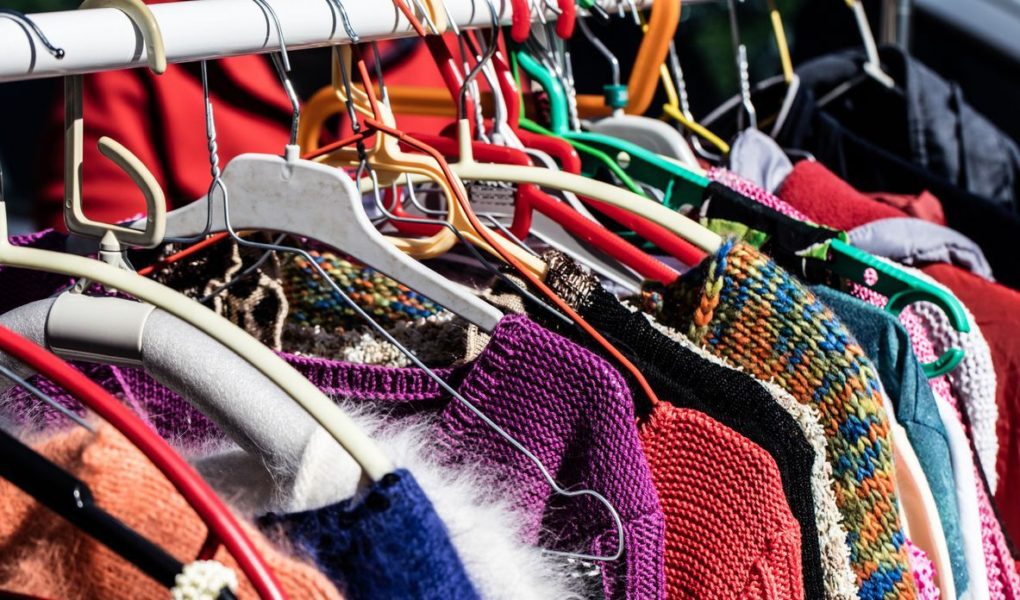A satisfactory activity; but?
Thrift shopping is essential today, especially in sub-Saharan Africa. This activity which is developing all over the world, allows the entry into a new consumption cycle, clothes already used elsewhere by giving them a new market value which is good for both local and international economies, even if the downside of the strong environmental impact that this activity generate, is certainly not negligible. Indeed, between growing demand and satisfaction subject to controversy, there is the environmental impact of this activity in Africa. In addition to the international and local transports of goods which further contributes to air pollution via trucks, ships and planes, there is the flow of used clothing which ends up in open-air bins which further aggravates the difficulty of managing household waste.
The overproduction and overconsumption of clothing has led to environmental problems on a global scale which prove that the protection of nature is above all a collective affair before being individual because the development of an activity generating income for the scale of the planet like that of the thrift store, always leads to consequences which also require other investments proportionate to the profits from sales, to further reduce the environmental impact of this activity on a global scale. It is also important to note that the sorting work started outside, continues inside the continent. If in fact, those who started this work out of the continent believe that the quality of these clothes is good, the buyer-reseller who is in sub-Saharan Africa in particular, does not always perceive things in the same way. This is the reason why after receiving the balls or bundles, some clothes end up directly in the trash. Some of them (second-hand clothes) undergo modifications, while buyers who themselves, after several years of use, are obliged to throw away unusable or expired clothing according to them.
If there will always be clothing that ends up in the trash, particularly in Africa, or recycled elsewhere given that these are the final destinations of all garments, whether or not they are the subject of multiple transatlantic voyages, we can still mitigate the impact on the environment by also thinking about putting more resources into limiting the emission of greenhouse gases and the degradation of soils and the environment, particularly through the creation of subsidiaries of clothing producing companies in Africa and in providing for cycle ends by incineration that respects ecological standards.
Overproduction must be limited to further supplying local markets to limit greenhouse gas emissions through subcontracting and also allow local businesses to prosper because, when it is only large industries that produce in exaggerated ways in particular by carrying out continuous renewal to satisfy the present moment without really thinking about the next moment, if the second-hand clothing activity will always suit operators in the sector, the impacts on the environment will be more considerable. Note that the biggest polluters on the planet, namely China, Europe and the United States among others, are the leading exporters of second-hand clothing to Africa. This means that it is no longer a local problem but a global problem which requires urgent measures. We must give ourselves the means to manage the environmental damage generated by the quest for profit.
Globalization combined with demographic growth contributes to generating environmental problems on a global scale and particularly in Africa which can be resolved by the creation of production factories in Africa for African populations and on the scale of each Territory to manage waste even better and not take Africa for a universal income-generating landfill without taking into account the impact of this activity on the health of the populations. Anyone who contributes to generating more environmental problems outside their geographical area must automatically participate actively in the fight against the degradation of external ecosystems and in sub-Saharan Africa in particular by providing the necessary means, and not by only providing very profitable partial solutions which are limited to the trade in second-hand clothing by the growing development of second-hand clothes which further contributes to aggravating environmental problems, particularly in sub-Saharan Africa. But we must not lose sight of the fact that, if there were not these demands for clothing on a global scale as well as the consumer market that they constitute, it would have been necessary to find a way to satisfy a growing demand with products produced locally and at lower costs. We must therefore not just say that Africa is a dumping ground for clothes already used elsewhere, but ask ourselves what this mercantile activity which also has very good traceability despite the fact that it excels in the informal sector, brings to our economies, and what we must do, to eradicate the artificial reliefs it generates?
English|French

